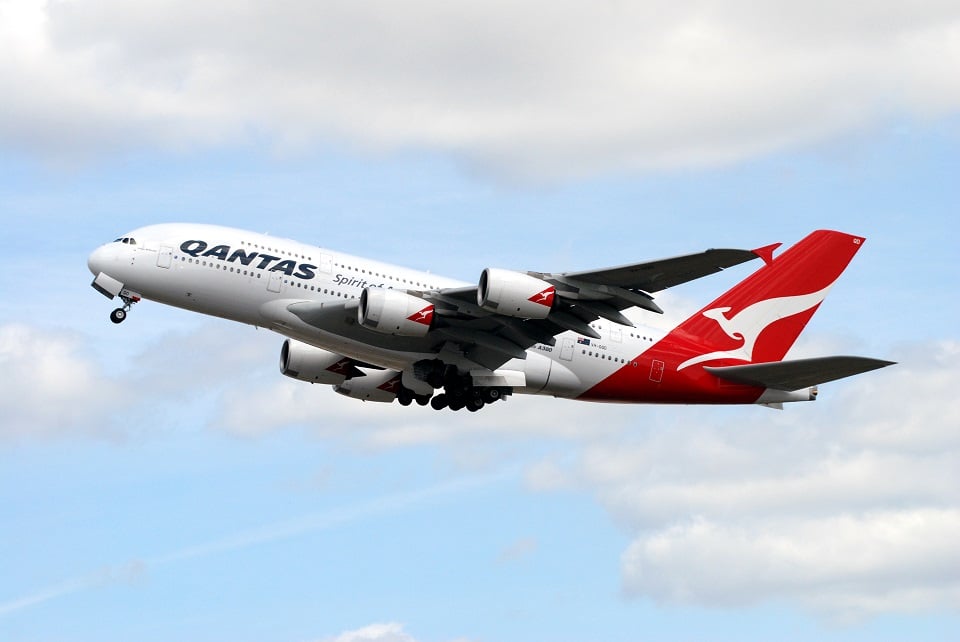Airlines
Iberia boosts its flight offer in Latin America and United states

Iberia will consolidate its post-pandemic recovery in the summer of 2023, focusing on its long-haul markets: Latin America and the United States.
For the airline industry, the summer season begins on March 25th and runs until October 28th, six months in which Iberia’s main focus will be on Latin America. Following the recovery of its entire network of destinations, the airline has programmed capacity increases in its most strategic markets in this region, as well as deploying marketing campaigns and other communication, public relations and sponsorship actions to increase its brand awareness in the 16 Latin American countries where it flies.
This Is The Most Punctual Airline In The Europe(Opens in a new browser tab)
In the summer season, Iberia will recover its full range of pre-pandemic flights and even increase its operations by 2% compared to 2019 levels, which will be 5% for the year as a whole. Specifically, it will offer around 280 weekly flights to 18 destinations in 16 Latin American countries:
Bogotá: it has grown from 10 to 14 frequencies; from June, it will operate 18 frequencies and the company’s aim is to offer 21 frequencies – three daily flights – from November.
Buenos Aires: Consolidation of two daily flights to Argentina’s capital.
Lima: Iberia goes from seven to 10 frequencies from June until the end of the year, with the intention of reaching two daily flights.
Montevideo: From January, Iberia offers up to seven weekly frequencies, which will be maintained for most of the year.
Rio de Janeiro: Continuation of the operation with three weekly frequencies, in addition to another seven with Sao Paulo.
Boeing 737 MAX makes first passenger flight in China since March 2019(Opens in a new browser tab)
In Central America, the increase to a daily flight on the Guatemala-El Salvador route, which took place in December, was consolidated, as was the increase to a daily flight on the San José route in Costa Rica. Panama will have between five and seven weekly frequencies throughout the summer, and daily flights from November onwards.
In the Caribbean, Havana will have five frequencies from September, Santo Domingo will consolidate its pre-pandemic operation with a daily flight, and Puerto Rico will reach six weekly frequencies in July and August.
In the US, Iberia will recover its summer routes to Washington DC and San Francisco. In addition, from June, it will increase its daily flights to Dallas. In total, it has scheduled nearly 20% more flights to the US than in 2019: up to 124 weekly flights between Spain and eight destinations in the United States. Specifically:
New York: Twice daily flights from March, continuing beyond the summer season until the end of the year.
Miami: Twice-daily flights will be maintained throughout the year.
Chicago: Daily flights from March through December
Boston: Daily flights from April to October
Dallas: Iberia operated this route throughout the winter -it was initially launched as seasonal last June with four weekly frequencies- and from April it will increase to five frequencies, to six in May, and will reach a daily flight from June to October.
Los Angeles: This route will have four frequencies in April, increasing to five from May to October, and Iberia will operate it with its largest aircraft, the Airbus A350s, with a capacity for 359 passengers.
Washington DC: Iberia will operate this route again from April to October with four weekly frequencies.
San Francisco: This seasonal route returns from May to October with three weekly frequencies.

Aerospace
Which is bigger 777x or 787 aircraft ?

The 777X is a new series of the Boeing 777 family and is designed to be larger and more efficient than its predecessor. It features two variants: the 777-8 and the 777-9, being the larger of the two.
The Boeing 777X emerges as the larger sibling within the Boeing family, representing a significant leap forward in both size and efficiency. Comprising two variants, the 777-8 and the 777-9, the latter takes the crown as the larger of the two. With its expansive fuselage and impressive wingspan, the 777X is tailored for long-range journeys and boasts a substantial passenger capacity.
On the other hand, the Boeing 787, affectionately known as the Dreamliner, occupies a niche in the market as a smaller yet formidable aircraft designed for medium to long-range flights. Its distinguishing feature lies in its composite fuselage, a technological marvel that renders it lighter and more fuel-efficient compared to conventional aluminum counterparts. The Boeing 777X is larger than the Boeing 787 aircraft.
When it comes to passenger capacity, the 777-9 reigns supreme, typically accommodating a sizeable contingent of 400-425 passengers in its standard configuration. In contrast, the 787, with its more modest dimensions, typically carries between 240-290 passengers, depending on the variant and layout.
One of the remarkable innovations introduced with the 777X is its folding wingtips, a feature designed to address the logistical challenges of accommodating such a large aircraft in conventional airport gates. These folding wingtips enable the 777X to retract its wings, allowing it to fit into gates designed for smaller aircraft while still reaping the benefits of an extended wingspan during flight, thereby enhancing fuel efficiency and operational flexibility
Airlines
Why Don’t Airplanes Fly Over the Pacific Ocean?

Flights do indeed fly over the Pacific Ocean, but the routes they take are often determined by factors such as airline policies, air traffic control decisions, and weather conditions. The Pacific Ocean is one of the largest bodies of water on Earth, and it’s regularly crossed by numerous flights traveling between North America, Asia, Australia, and other destinations.
However, some specific routes might avoid flying directly over certain parts of the Pacific Ocean for various reasons. For example:
- Safety and emergency considerations: While modern aircraft are equipped with advanced safety features, airlines, and pilots may prefer routes that keep them closer to potential diversion airports or within range of search and rescue facilities in case of emergencies.
- Air traffic control restrictions: Airspace management authorities may impose certain restrictions or preferred routes for managing air traffic efficiently. These restrictions could be based on factors such as military operations, airspace congestion, or diplomatic considerations.
- Weather conditions: Pilots and airlines consider weather patterns when planning routes. While the Pacific Ocean generally experiences fewer weather-related disruptions compared to other regions, factors like turbulence, thunderstorms, or tropical cyclones can influence route selection.
- Managing Cost Factors: In route planning, airlines have to take fuel prices, maintenance costs, crew charges, and other operating costs into account. Direct routes over the Pacific Ocean may be more cost-effective for shorter distances, but they may also necessitate extra safety precautions, including carrying more fuel for longer overwater operations.
- Remote Locations and Navigational Challenges: The Pacific Ocean’s vastness poses navigational issues, particularly for aircraft operating over isolated regions with few ground-based navigational aids. For precise positioning and route direction, pilots must mostly rely on satellite-based technology and onboard navigation systems, which may necessitate additional training and equipment purchases.
- Lack of Suitable Landing Options in the Pacific Ocean: Unlike regions with dense air traffic and numerous airports, the Pacific Ocean has vast stretches of open water with few suitable landing options in case of emergencies. While long-range aircraft are equipped with safety features like life rafts and emergency locator transmitters, the lack of nearby airports can increase the time it takes for rescue and recovery operations to reach distressed aircraft, posing additional risks to passengers and crew. Therefore, flight routes may be planned to ensure proximity to potential diversion airports or alternate landing sites in case of unforeseen circumstances.
Airlines
Oldest Qantas A380 returns to service after being in storage : 16 years +

The Airbus A380 stands as an icon in the aviation world, captivating travelers with its engineering marvel. However, the COVID-19 pandemic led to a halt in its production, causing a surge in demand for airline travel and a scarcity of these aircraft. Now, many airlines are eager to reintroduce the A380 into their fleets to address this shortage.
Qantas, among the airlines, had one of its A380 aircraft sitting in storage for over 16 years. Now, they’re keen to put it back into service to meet the soaring demand. Meanwhile, Emirates, Etihad, and British Airways continue to operate their A380s.
Qantas’s A380, which made its debut landing at London Gatwick, had initially landed at 07:45 BST from Sydney via Singapore. Operated by the registration VH-OQJ, this flight marked a significant return to service.
Another Qantas A380, registered as VH-OQA, recently resumed operations after being stored in Abu Dhabi for over a year. Its return to Sydney on April 5 signaled its readiness to serve again. This fifteen-and-a-half-year-old aircraft made its first post-storage flight on April 6, a 13-hour journey from SYD to LAX, devoid of passengers. Shortly after arrival, it was swiftly deployed for a long-haul flight, QF11, from SYD to LAX.
These trial flights, including the Sydney to London Gatwick route, demonstrate the aircraft’s renewed capability for regular services.
Qantas, like other carriers, faces a challenge in meeting the surging passenger demand with its existing fleet. Hence, the decision to bring back stored aircraft to service is a strategic move to cater to this growing need.
Delivered to Qantas in September 2008, this A380 boasts 12 units, all equipped with Rolls-Royce Trent 900 engines and a maximum take-off weight of approximately 570,000 kg (~1.26 million lbs). Most have a seating capacity of 485, including 14 first-class seats.























